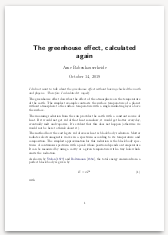Please comment your code
Code speaks to the machine and humans, comments only speak to humans. That’s why comments can always be easier to understand and give more context than code.
They may not always do that, and if the code gives the information as easily as the comment, I prefer just having the code, but I spent the last years working on a codebase of which a part suffered from having no comments due to adhering strictly to clean code, and my takeaway from this is.
The parts with comments are always easier to understand.
„You could make the [function] name much longer …, but then it is polluting the code where it is being used with information you only needed when writing the code, but usually not while reading it.“
Leaving out comments leads to code that replicates the comments but does not actually become clearer — it gets worse, because it mashes together different constraints.
Function names are more visible but more constrained
The main differences between the name of your function and a comment is that
- you have more constraints in choosing the function name,
- the function shows up in code-completion directly, and
- The function is visible at every place your function is used (which can be an advantage, but also adds more constraints).
The three-to-five words you use in a function name are often not
capable of capturing the more subtle information you need when using
the function. Look at the Javadoc of some of the Java Collections
methods. Which exceptions does it throw? Does it accept
null-elements? What are its performance-guarantees?
You could make the name much longer to capture all that, too, but then it is polluting the code where it is being used with information you only needed when writing the code, but usually not while reading it. When reading code to understand it (not necessarily for reviewing), you can usually assume that the original author made the right choice, and for this a short function name is sufficient — with more information available as comments in its implementation.
So don’t mix up domains. Capture information in comments where that’s the best way to capture their content. And use your coding instinct. This is not a matter of following fixed rules or ideology but rather of using your own well-honed sense for code.
The right information at the right level
Your goal is to record information such that those reading or using or modifying your code easily get exactly the information they need at that moment.
Mind the different levels of information:
- names of functions, variables, and the modules that hold them
- comments, inline with your code or as docstrings/apidoc/…
- commit messages people access by checking annotations (often called "blame")
- api documentation (maybe generated from docstrings in your code?)
- structure and domain description (info-manual? exported from orgmode?)
- tutorials for different kinds of tasks
If you skip any of these, the others have to compensate — badly — for the lack of information at the right level.
For ideal levels of information, see the article Teach, Don't Tell.
Conclusion
If all else is equal, the parts with comments are easier to understand.
PS: There’s a nice video on this topic: Healthy Software Developer: If Code Is Self-Documenting, Why Do Comments Exist?
